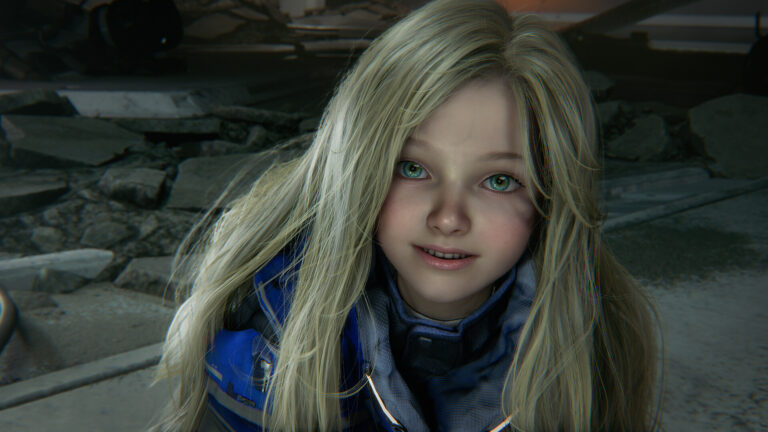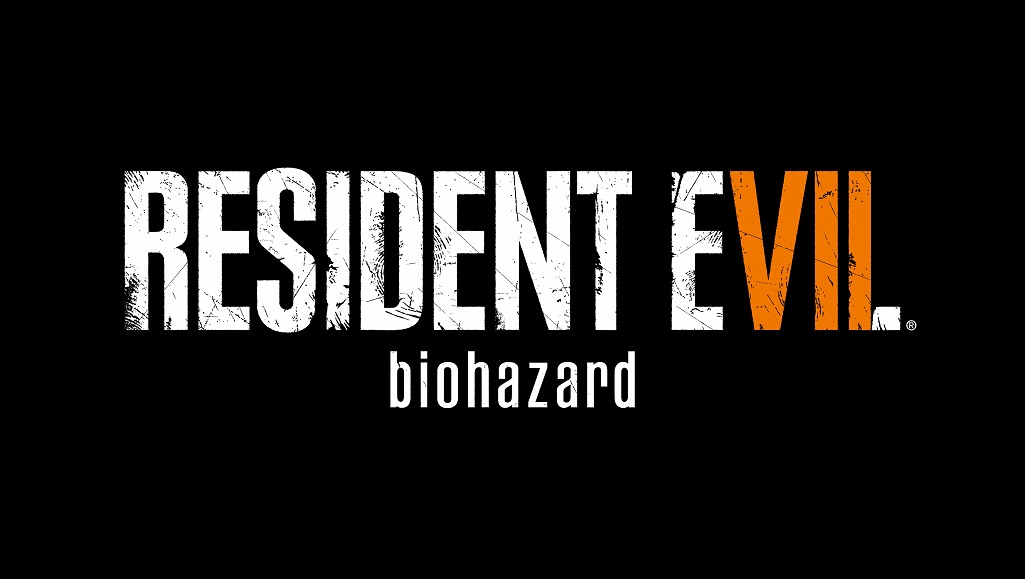
What a long, winding, and confusing, journey it has been. The Resident Evil series has mutated into so many different genres since its old school survival horror days, that it’s been hard to simply answer the question, “what is Resident Evil?” As the mechanics changed, the focus shifted away from survival toward action, and as series staples were stripped away, it slowly became unrecognizable from its slow-paced, puzzle-laden horror origins. But no more!
Without wishing to keep you waiting any longer, I can say with full confidence — as a fan since that fateful day in Raccoon City in 1998 — that Resident Evil … is back.
If you’ve come seeking the bombastic combat and storytelling of RE6, or even the more subdued (but similarly action-oriented) RE4 and 5, then I’m afraid that this game simply is not for you. From a mechanical standpoint, very little separates RE7 from the original games to the point where you could honestly skip from Code: Veronica to RE7 without much displacement, other than the obvious perspective change to first-person. Most of the mechanics seen within are either returning outright from previous entries — item boxes, ECG health, item management, puzzles and more — or are adaptations of ideas previously used in the series. But I’m getting ahead of myself here.
One of the biggest concerns fans have had for the latest entry in this long-standing series is its tone and gameplay. Essentially, has the series finally returned to its survival horror roots? To do so would take more than just a return of familiar mechanics. If I had to best pin down how RE7 compares to past games in the series, it would be a combination of the original Resident Evil regarding tone and RE3 for its methodical survival gameplay. The mystery that permeated the original game and its world returns, as RE7 introduces an entirely new story, not reliant on previous entries as exposition. This creates the tension of the unexplained, the unexpected — an element that has been missing since the start of the series, and arguably the soft-reboot that was RE4.

The mystery of Resident Evil 7 begins with protagonist Ethan Winters, who is called away from the big city to the town of Dulvey, Louisiana, in search of his long since considered dead wife, Mia. It’s here that he faces unknown and unbelievable horrors on the estate of the once-”quiet” Baker family. Over the course of his journey, as well as through obtainable documents — from newspaper clippings, journals, post-it notes (yes, really), and medical paperwork — Ethan chips away the blood caked over the answers behind the events that transpired and how they relate to his missing wife. In classic RE fashion, uncovering the unseen events is a pure delight in RE7, and is my favorite aspect of the game’s story.
RE7 requires players to do their homework to gain an understanding of what’s truly at stake for Ethan and those around him. The story is far more interesting and complex the deeper you dive in, but you’ll still find a compelling horror narrative by simply focusing on Ethan’s survival and the rescue of his wife. You’d be doing yourself a disservice, though. As for the ending, that begs a discussion that I cannot wait to have with fellow players once the game’s released.
All of that said, the mystery (there’s that word again) and sheer dread-inducing qualities of RE7’s story is easily the best the series has offered in years, perhaps ever. This is a smaller, more personal story than the series has ever done, resulting in a story considerably more relatable. While RE6 staked everything on the idea that we’d feel impacted by the fate of hundreds of thousands of nameless civilians and masked BSAA soldiers dying en masse — RE7 is content to let us ponder our own safety, and delve into the tragic stories of those who didn’t make it as far as we did (like the ill-fated Sewer Gators crew from the demo).
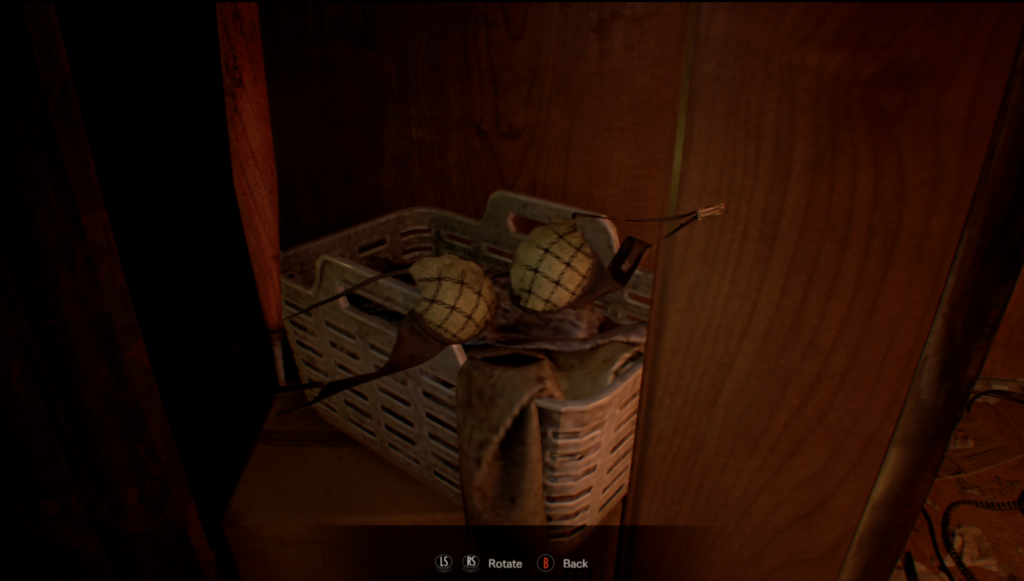
You’ll notice that my direct comparisons to RE7 include the original 1996 release, not the 2002 REmake. There’s a reason for this; while the atmosphere of mystery, tension, and dread returns in full force from the original game, so too does its mild cheesiness. While I won’t say the cheese gets in the way quite like it did in the original game, there is an air of deliberate humor underpinning the horror in RE7. Ethan’s own personality leads to him being surprisingly talkative, commenting on his surroundings and the goings-on of the story. Small grin-inducing nods to both classic RE games and other horror franchises, of not just games but also films, appear as well. If anything, the slight moments of levity defuse the otherwise immense tension found within RE7 with the gift of a small chuckle or two — that is until the rug is torn right from under you.
RE7 marks the return of the nail-biting inventory management and cautionary item usage of the original games. While previous entries in the series toyed around with item crafting as a mechanic, RE7 embraces it for revamped item/health system. An entirely new item called Chemical Fluids has been introduced to the game, acting as a robust crafting agent for both powerful healing items and weapon ammo (when combined with herbs or gunpowder). This creates a choice mechanic that becomes pivotal when down to the wire in stressful situations — create more ammunition or heal your wounds? To avoid keeping the player’s head down in the inventory menu for extended periods of time, though, there’s luckily a quick “combine” menu that lets you create any required items quickly if the pressure is on, given that you have the proper supplies of course.
Puzzles return in a big way in RE7, from simple things like manipulating shadow perspectives to reveal something, to more complex brain-teasers. As one moves along in the game, of course, puzzles become a bit more challenging. None of the puzzles ever quite reach the level of masochism Code: Veronica’s designers practiced, but they’re an appreciated deviation from the sliding puzzles and bell shooting junk fests found in the last few RE games. There are even a few optional puzzles as well, and the rewards are worth it.
Combat is fun and tense, especially given ammo conservation remains an important factor as enemies don’t drop ammo or supplies. You have to do the legwork yourself, buddy, and find what you need in the world around you (and sometimes stuff can be devilishly hidden). There’s a surprising amount of weapon variety, and the eagle-eyed and shrewd survivor can fill out their arsenal with a number of hidden, and even constructed, weaponry requiring multiple parts to be found and combined. Unfortunately, talking combat leads me to one of my few actual complaints with the game: enemies. While given a robust set of weapons and items by the game’s final hours, the same cannot be said for enemy variety. Strangely, the game eschews the progressive enemy build up of previous games and offers scarcely more diversity than that of the first Revelations game. That said, in place of many different enemy types, the game instead focuses on progressively more complex boss battles. I don’t wish to spoil you on this, so I’ll forego specifics, but I can honestly say RE7 has the best boss fights in Resident Evil history — which is saying a lot.
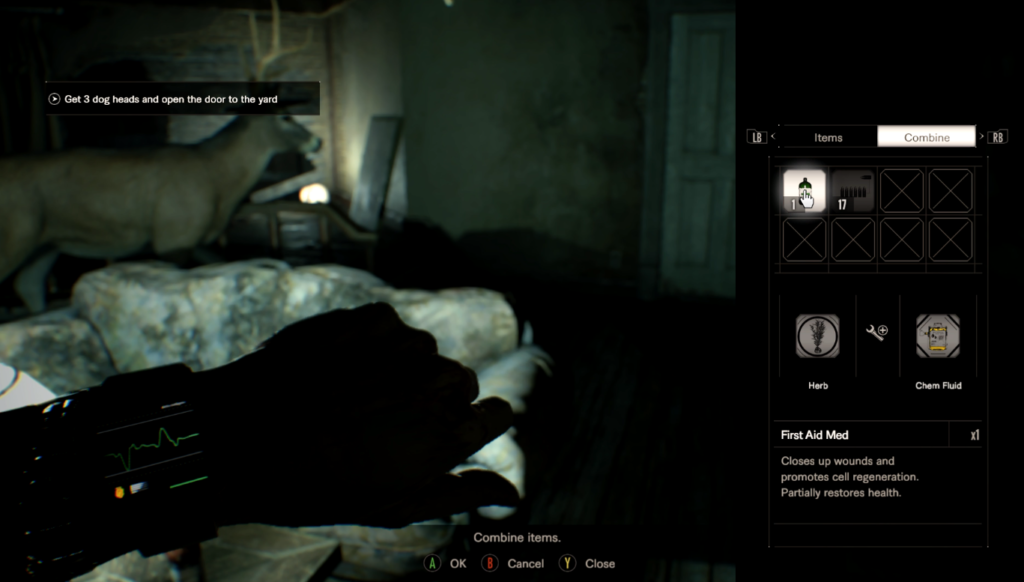
RE7’s survival mechanics, combat, and puzzles add up to recreate the feelings of experiencing the original games in the series for the first time — building upon old school survival horror gameplay. But I haven’t even mentioned the unlockable Madhouse difficulty!
For what reasons Capcom has been so coy about detailing RE7’s Madhouse difficulty, I can’t confidently say — but experiencing it first-hand made me feel that this was the way the game was intended to be played. I expected Madhouse to simply be a much harder version of the game, with fewer consumables and tougher foes, but it’s much more than that. Rather than simply being more scarce, items have been rearranged around the environment. The spawn locations for items and weapons on Normal differ entirely while playing on Madhouse. Enemies not only become smarter and more fierce, but spawn at different times, in different areas, and in greater numbers. Even more surprisingly, is that there’s a number of items that are only obtainable on Madhouse difficulty, which can significantly change the course of the action. To top it all off, the best change Madhouse brings is the return of a classic Resident Evil mechanic that we haven’t seen since RE0. If you’re looking for an old school, REmake-level of challenge, Madhouse difficulty is for you.
Despite my love for the mode, you might want to consider going through the game on Normal at least once first to gain a full understanding of the gameplay, rather than just hardcoring it up.
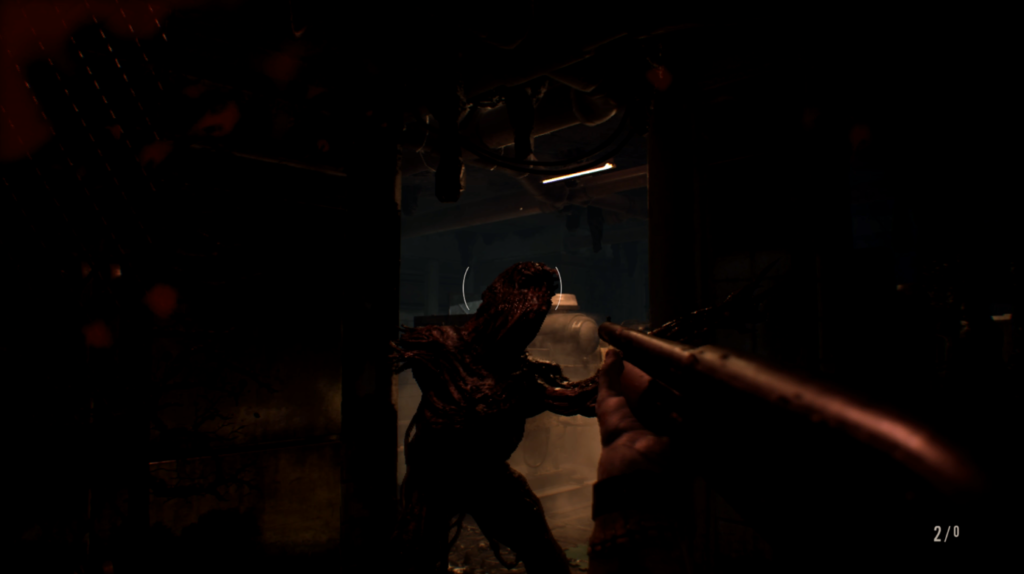
The photogrammetry technique used to create RE7’s visuals lead to stunningly realistic set pieces and character models. The attention to detail is akin to the series’ Gamecube debut with REmake and its follow up RE0. Everything in this world has been placed with attention and care, helping immerse us in the once normal, now monstrous, Baker mansion. Numerous visual details help ground the location, from obtainable photos, Halloween decorations shoved away in the back of a hallway, and a wholesome but dust-caked rec room. The art direction never just feels like simple grime and clutter for the sake of it, everything feels like it has a reason to belong, or at least did at one time.
Several moments from the game took my breath away, and if I’m not mistaken is thanks in part to live action video being spliced into the in-game visuals for added impact, particularly in the case of blood. Oh yes, this is by far the goriest RE game yet, and the blood effects have never looked better. All of that said, RE7 on consoles features a lot of texture pop-in and a number of lesser-quality effects mixed in with those that are superior. The disparity in some effects and texture quality can be a little jarring from time to time. Obviously, this is the case in most if not all games, not everything can look great, but there’s a lot of elements in this game that end up standing the muddy textures and the amazing ones side-by-side. I can only assume this issue is curtailed a bit by playing on PS4 Pro or PC.
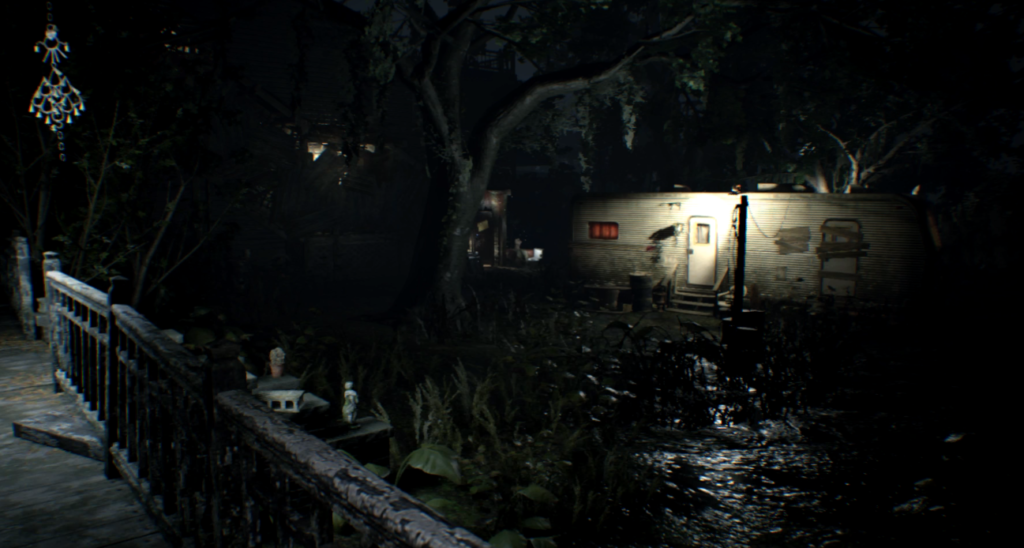
One of, if not the biggest, draws to RE7 (if you’re on PS4 at least) is the chance to play the game completely in VR. For this review, I played the game both ways in two full playthroughs. Honestly, both have their benefits. It goes without saying that VR enhances the immersion and atmosphere considerably. RE7 is pure and simple a different experience in VR than it is out, as even the smallest elements of the world become larger than life in virtual reality. A simple staircase leading down becomes a dread-filled journey into the abyss, Jack Baker’s hand reaching across your vision to spin you around to face him becomes startling and yelp-inducing, and even something as totally mundane as wading through water or crouching through tall grass becomes claustrophobic and unnerving. Oh, and if you’re afraid of bugs, I’ve got bad news for you.
In VR, combat changes drastically, becoming faster and more fluid; aiming is done by moving your head toward where you want to shoot rather than using the analog stick. A cleverly designed recoil effect keeps aiming from being too easy, and it balances out well. In an effort to prevent VR motion sickness, the developers make various animation and transitional changes, as well as the option to orient one’s self in 30-degree increments. A slight vignette around the edges of the player’s vision does wonders when sprinting or quick-turning, but the cutting to black with nearly every world interaction isn’t as welcome. A jarring black fade from gameplay to 2D pre-rendered video in some scripted scenes attempt to redirect our attention without a focus change but at the sacrifice of immersion. While slight, it occurs too often for my liking. But, I understand why the effects and somewhat restrictive movement changes exist — to keep our attention on being too afraid to play, not too sick. Motion sickness was a major complaint with the E3 version of the Beginning Hour demo, but I can’t help but feel there must have been a better way to handle this.

While I did have a few gripes with enemy variety and VR-related immersion breaking effects, that hasn’t affected how overjoyed I am by the effort that is RE7. As someone who has grown fatigued by the overflow of hide and seek horror, action games masquerading as horror, and the seemingly complete death of the survival horror genre, RE7 is so very much the game that I wanted 10 years ago, and the one it so much needed to be. RE7 is a new take on a genre that has more or less died off in the modern age within the AAA publisher space. It embodies a style of game design that we haven’t seen from the series since before RE4 changed everything.
Resident Evil is back, and I’m already hungry — starved — for more. It’s good to be home again.
 (9 / 10)
(9 / 10)
Amazing
 (9 / 10)
(9 / 10)Rely on Horror Review Score Guide
PlayStation 4 and Xbox One review code were provided by the publisher.

